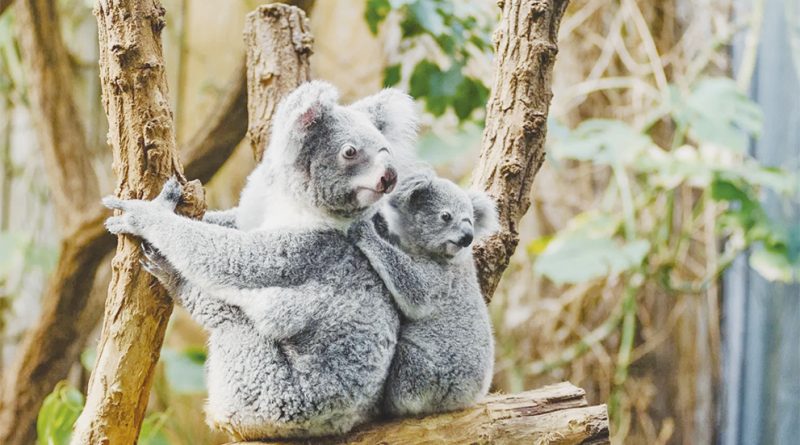Animales en peligro de extinción / A million species are facing extinction but it’s not too late to save them

Las especies que desaparecieron en la Tierra son solo la punta del iceberg de las que podrían extinguirse el próximo siglo
¿Cuántos mamíferos desaparecerán de la Tierra en el próximo siglo?
Un grupo de científicos hizo este cálculo basándose en la evidencia fósil de extinciones pasadas.
La predicción sugiere que al menos 550 especies seguirán los pasos del mamut y el felino dientes de sable.
Con cada “especie perdida” desaparece parte de la historia natural de la Tierra, dicen los investigadores.
Sin embargo, a pesar de estas proyecciones “sombrías”, podemos salvar cientos de especies intensificando los esfuerzos de conservación.
Responsabilidad
El estudio científico, publicado en la revista Science Advances, sugiere que los humanos son casi enteramente responsables de las extinciones de mamíferos en las últimas décadas.
Y las cifras subirán en el futuro si no actuamos ahora.
A pesar de este escenario “alarmante”, podríamos salvar cientos, si no miles, de especies con estrategias de conservación más específicas y eficientes, dijo Tobias Andermann del Centro de Biodiversidad Global de Gotemburgo y la Universidad de Gotemburgo, Suecia.
Para lograrlo, debemos aumentar nuestra conciencia colectiva sobre la “inminente escalada de la crisis de la biodiversidad y tomar medidas para combatir esta emergencia mundial”.
“El tiempo apremia”, advirtió. “Con cada especie perdida, desaparece irreversiblemente una porción única de la historia natural de la Tierra”.
La punta del iceberg
Los científicos recopilaron un gran conjunto de datos de fósiles que proporcionaron evidencia del momento y la escala de las extinciones recientes.
Sus simulaciones por computadora predicen grandes aumentos en las tasas de extinción para el año 2100, basándose en el estado actual de amenaza de las especies.
Según estos modelos, las extinciones ocurridas en los siglos pasados solo representan la punta del iceberg, en comparación con las extinciones que se avecinan en las próximas décadas.
“Reconstruir nuestros impactos pasados sobre la biodiversidad es esencial para comprender por qué algunas especies y ecosistemas han sido particularmente vulnerables a las actividades humanas, lo que con suerte nos puede permitir desarrollar acciones de conservación más efectivas para combatir la extinción”, dijo el profesor Samuel Turvey de la Sociedad Zoológica de Londres (ZSL).
El año pasado, un panel intergubernamental de científicos dijo que un millón de especies de animales y plantas estaban ahora en amenaza de extinción.
Los científicos advirtieron que estamos entrando en la sexta extinción masiva, y que cualquier cosa que hagamos ahora probablemente definirá el futuro de la humanidad.

A million species are facing extinction but it’s not too late to save them
A sixth mass extinction can be avoided — but we need to act now to preserve Earth’s ecosystem, says a new programme by Sir David Attenborough
It was recently reported that many people have simply stopped reading the news. There is a sense of helplessness and “what’s the point?” The Covid-19 pandemic is not helping.
If you are feeling this way, then the first half of BBC1’s Extinction: The Facts will make difficult viewing on Sunday night. Scientific evidence, including from a global report published last year by the Intergovernmental Panel on Biodiversity and Ecosystem Services, states starkly that many populations of plant and animal species are declining to the point where they will become extinct in the next few decades. Some have already gone.
This pattern of decline is now seen in thousands of scientific studies. This week, scientists at the Zoological Society of London also warned that animals, birds and insects around the globe are disappearing at an unprecedented rate.
They tracked data on more than 20,000 populations of mammals, birds, fish, amphibians and reptiles of 4,392 species and found that population sizes have fallen by an average of 68 per cent since 1970.
Up to a million species facing extinction
The fact is that up to a million species are facing extinction. Of those assessed, up to 25 per cent demonstrate declining population sizes and shrinking habitats. It’s frightening stuff.
If your “worry cup” is already over-full, the obvious question is: how much does this loss of global biological diversity really matter? Where do extinctions stack up in comparison to other current environmental and health-related crises – climate change, global warming, food insecurity, locust infestations and Covid-19?.
I have sometimes heard people say that extinctions are a natural process seen throughout Earth’s history, and we should take them in our stride. This is true – but they usually occur over thousands if not millions of years. Current extinctions are happening over decades, a pace that far outstrips any scientific evidence from previous events.
The causes of current extinctions are also entirely different – human-driven processes such as land-use change, climate change, pollution and over-harvesting.
The end of birth
As a result, the size of populations of species in the wild are becoming smaller to the point where they are no longer viable and able to reproduce at a rate of replacement. As a scientist once pointed out, loss of life is one thing, but end of birth, which is what extinction represents, is quite another.
So extinctions should probably be near the top of our worry list, if not at the very top. The loss of species, habitats and ecosystems has the potential to impact all aspects of our everyday lives. It affects the food we eat, the air we breathe and the water that we drink.
Extinction linked to pandemics
Removal of natural habitats for wild species such as monkeys, chimpanzees, bats and pangolins brings them into ever closer proximity with each other and with us. This has severe consequences when disease transmission occurs between wildlife and humans, as it has with Sars, Aids, ebola and now Covid-19.
Extinction, therefore, is not just about losing pretty flowers and iconic large animals, but assets critical to humankind. This is where we have gone wrong. We view nature as a freely available resource to plunder and remove to make way for other requirements of our lives, rather than as a critical asset that underpins our wellbeing.
But there is a glimmer of hope, highlighted in the second half of Extinction: The Facts. The global view of biodiversity is changing. Large businesses and governments the world over are starting to view biodiversity as an important asset with significant economic value. And, as with any asset, the focus should therefore be on maintaining and enhancing it.
A recent report by the World Wide Fund for Nature (WWF), for example, estimates that the damage we are currently doing to biodiversity could drain nearly $10 trillion (£7.7 trillion) from the global economy by 2050. When numbers like this are mentioned, global companies and investors start to listen.
By Katherine Willis


 (1) (2).jpg)


Debe estar conectado para enviar un comentario.